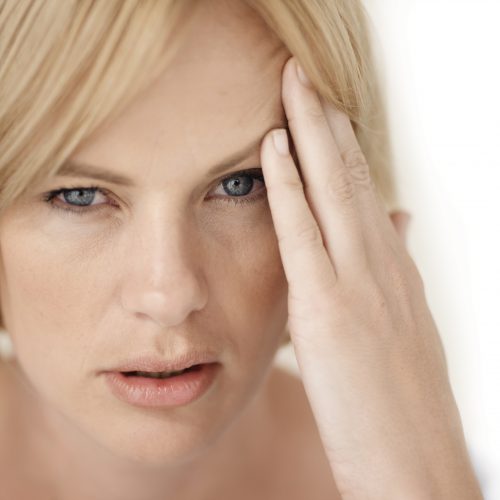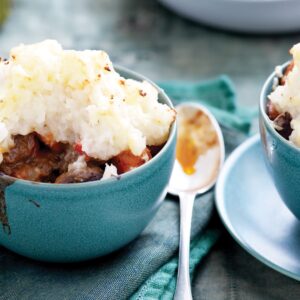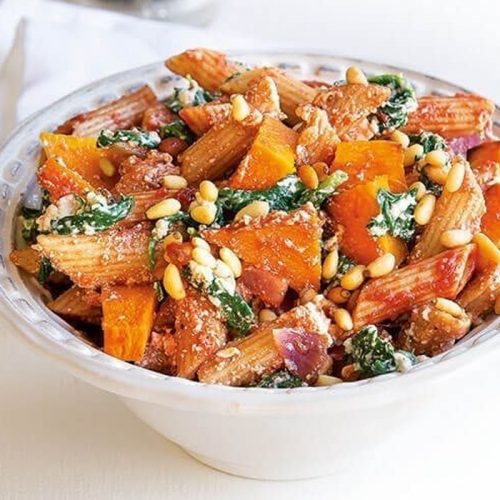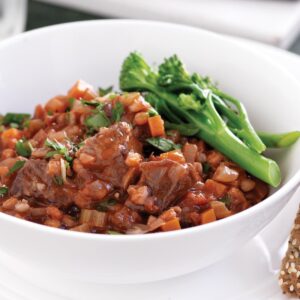
HFG senior nutritionist Rose Carr delves into some of the ways our bodies tell us we need to take action.
Sign: Can’t sleep
IT COULD BE what you are eating or drinking in the hours before you go to bed.
Eating too much can overfill our stomachs and cause discomfort, while an empty stomach can groan with hunger pangs – either of these can stop us getting to sleep. Caffeine is a stimulant and most people find a coffee before bed means it takes longer to get to sleep. Don’t forget that tea, hot chocolate, cola or energy drinks, and chocolate all contain caffeine. A little alcohol before bed can be sedating, but more has the opposite effect as the breakdown products of alcohol disturb the quality of our sleep and wake us in the night.
WHAT TO DO Time your evening meal or supper so you don’t go to bed either famished or too full. If you have trouble getting to sleep, review your caffeine intake. The effects of caffeine accumulate, so you may need to try limiting or avoiding caffeine after 2pm. If your sleep is disturbed, limit your alcohol intake before bedtime.
OR IT COULD BE one of many other reasons including everything from breathing problems to anxiety and stress.
Sign: Migraine headaches
IT COULD BE food triggering your migraine. Around a quarter of people who regularly get migraines recognise certain foods as triggers.
WHAT TO DO In a study of over 600 migraine-sufferers, skipped meals and fasting were reported as triggers in more than half of participants, so eating regular meals is a must. Get plenty of fluids, while limiting alcohol, as dehydration and alcohol use (which can sometimes be linked!) are both common triggers. If you need to cut back on caffeine, do it slowly as caffeine withdrawal can cause headaches, too.
Keep a food and symptom diary, to help identify your trigger food/s, as it’s very individual. Foods and drinks found to trigger migraines for some people include aged cheese, cured meats, smoked fish, chocolate, garlic, nuts, raw onions, coffee and other caffeinated drinks, foods containing MSG and alcohol – in particular red wine or beer.
OR IT COULD BE stress, and for women, hormones: both are common triggers. Other possible triggers include neck injury, sleep disturbance or heat. Headaches are unlikely to be the only symptom of more serious disorders, but it may pay to check, especially if they are a new occurrence.
Sign: Nausea, vomiting, abdominal cramps, diarrhoea, fever and headache
IT COULD BE a food-borne illness such as campylobacter or salmonella. Campylobacter bacteria have been found in poultry, raw milk, offal and a variety of other foods. Salmonella bacteria can be found on most foods of animal origin and foods handled by infected food handlers.
WHAT TO DO If you think it is a food-borne illness, plenty of fluid and rest is normally all that’s required for most people. To avoid food-borne illness in future, always practise the ‘clean, cook, chill’ routine when handling food. Poultry is the most common source of campylobacter, but the bacteria are killed by cooking. Avoid getting a dose of campylobacter from poultry by ensuring raw juices do not come into contact with other foods and that poultry is properly cooked before eating. Both Campylobacter and Salmonella bacteria multiply quickly in warm, moist conditions so keep food refrigerated to minimise its growth. See the Foodsmart website for the best food safety practices in and away from home.
OR IT COULD BE listeriosis, a food-borne illness caused by the Listeria bacteria, which can progress to serious illness in some people, as can salmonella. People most at risk are the young, old, pregnant and anyone with lowered immunity. Consult a doctor immediately if you believe you are at risk.
Sign: Often thirsty and peeing a lot
IT COULD BE type 2 diabetes. Excessive urination and an unquenchable thirst are a common symptom of diabetes, although they probably won’t be the only symptoms.
WHAT TO DO First get a diagnosis from your GP. If you have type 2 diabetes it can often be controlled for many years with a healthy diet and regular exercise.
OR IT COULD BE type 1 diabetes, an autoimmune disorder. It’s thought the body destroys the specialised insulin-producing cells in the pancreas, so they can no longer produce insulin and regular doses of insulin are required. Disorders of the adrenal and pituitary glands or the kidneys can also increase urination and lead to dehydration. Talk to your GP about your symptoms: a diagnosis is needed.
Sign: Wheezing, chest tightness and coughing
IT COULD BE sulphite allergy or intolerance. Sulphites are preservatives used in some drinks, foods and occasionally in medications. Reactions to sulphites can be mild through to potentially life threatening. While symptoms are more likely in people with poorly controlled asthma, reactions can also occur in people with no history of asthma.
WHAT TO DO If you have a sulphite allergy or intolerance you will need to avoid sulphites to avoid the reaction it gives you. Sulphites must be listed in food ingredients on food labels and are indicated by the numbers 220 to 228 or the word ‘sulphite’. Note that beer and wine often contain sulphites and this may not be listed. Allergies and intolerances can be difficult to pinpoint so it will pay to get professional help.
OR IT COULD BE a lung infection or other allergens can cause asthma-like symptoms, but whatever the cause, these symptoms should be investigated.
Sign: Inflamed big toe
IT COULD BE gout, an inflammatory arthritis. More common in men than women, gout is caused by a build up of uric acid crystals which accumulate in a joint causing swelling and pain. While often found in the joint of the big toe, it can occur in other joints especially around the toes, feet, knees, fingers, hands, and elbows.
WHAT TO DO Reducing your consumption of meat, offal, and seafood and avoiding sugar-sweetened soft-drinks, beer and spirits may help. A little wine is okay. Regular consumption of low-fat dairy products as well as coffee (whether caffeinated or not) are both associated with a decreased risk of gout. However, if you don’t normally drink coffee, don’t start by drinking large amounts as this could trigger an attack of gout. If you are overweight, aim to lose the excess, as this is one of the risk factors. There are medications to help with the pain and swelling, but avoid taking aspirin as it can reduce uric acid excretion.
OR IT COULD BE another type of arthritis or an infection, so a proper diagnosis is advisable.
Sign: Heart palpitations
IT COULD BE too much coffee and chocolate. Or is your caffeine hit from energy drinks? An excess of caffeine can cause heart palpitations and it may be that it is adding to other factors like stress or anxiety.
WHAT TO DO While it may take longer to sort out the things causing you stress, radically cutting back on coffee, tea, cocoa, chocolate and energy drinks can be organised pretty quickly. Although you may need to taper back your intake a little more slowly, as going cold turkey may give you caffeine-withdrawal headaches! And if you smoke, give it away. Nicotine will add to those palpitations.
OR IT COULD BE something more serious happening with your heart or thyroid, so if symptoms persist, don’t delay in talking to your GP.
Sign: Unexplained weight-loss
IT COULD BE coeliac disease. While not always a symptom of coeliac disease, weight-loss can occur as the lining of the intestine is damaged and not all the nutrients from food are absorbed.
WHAT TO DO People diagnosed with coeliac disease need to learn how to avoid all gluten in their diet in order to stop the damage to the lining of their intestine. Even when it causes no symptoms, the damage will occur if they have gluten.
OR IT COULD BE other gastrointestinal disorders, some serious infections, endocrine disorders, medications, age-related appetite changes and some cancers can lead to unintentional and unexplained weight-loss. So it’s a good idea to talk to your GP about it sooner rather than later.
Sign: Tummy upsets, bloating and wind
IT COULD BE lactose intolerance. This is the inability to digest lactose, a naturally occurring sugar in milk. This may be a permanent intolerance caused by the genetic inability to produce the lactase enzyme which breaks down the lactose.
It could also be a temporary intolerance caused by an infection damaging the lining of the intestine where the lactase is produced.
WHAT TO DO If you’re not sure what’s causing your discomfort, keep a food and symptom diary to help you identify it. You don’t want to limit an important food group unnecessarily. If it seems to be dairy, you can try limiting the amount of lactose in your diet. Foods with the highest lactose content are milk, ice cream, yoghurt and cream. Cottage cheese, cream cheese and feta cheese contain more lactose than other cheeses; matured or ripened cheeses such as camembert, cheddars or parmesan contain virtually none. Many people with lactose-intolerance can drink 100-200ml milk without symptoms, so experiment with your own intake to see what you can tolerate. If you do continue to limit your dairy intake, make sure you get adequate calcium from other sources.
OR IT COULD BE irritable bowel syndrome (IBS). Symptoms of lactose intolerance and IBS can be very similar and to make it more difficult, people with IBS often have absorption problems with lactose. Professional help from a dietitian or qualified nutritionist is advised.
Serious symptoms you should not ignore
If you experience any of these symptoms, seek medical attention.
- Chest pain
- Sudden weakness or inability to speak
- Blood in urine or stool
- Fainting
- Persistent or high fever
- Shortness of breath
- Sudden severe headache
- Flashes of light
- Hot, red or swollen joint
- Sudden weakness, double vision/loss of vision or speech, dizziness or tingling
- Sudden or severe abdominal pain
- Unexplained weight-loss
- Unexplained changes in bowel habits
www.healthyfood.com













